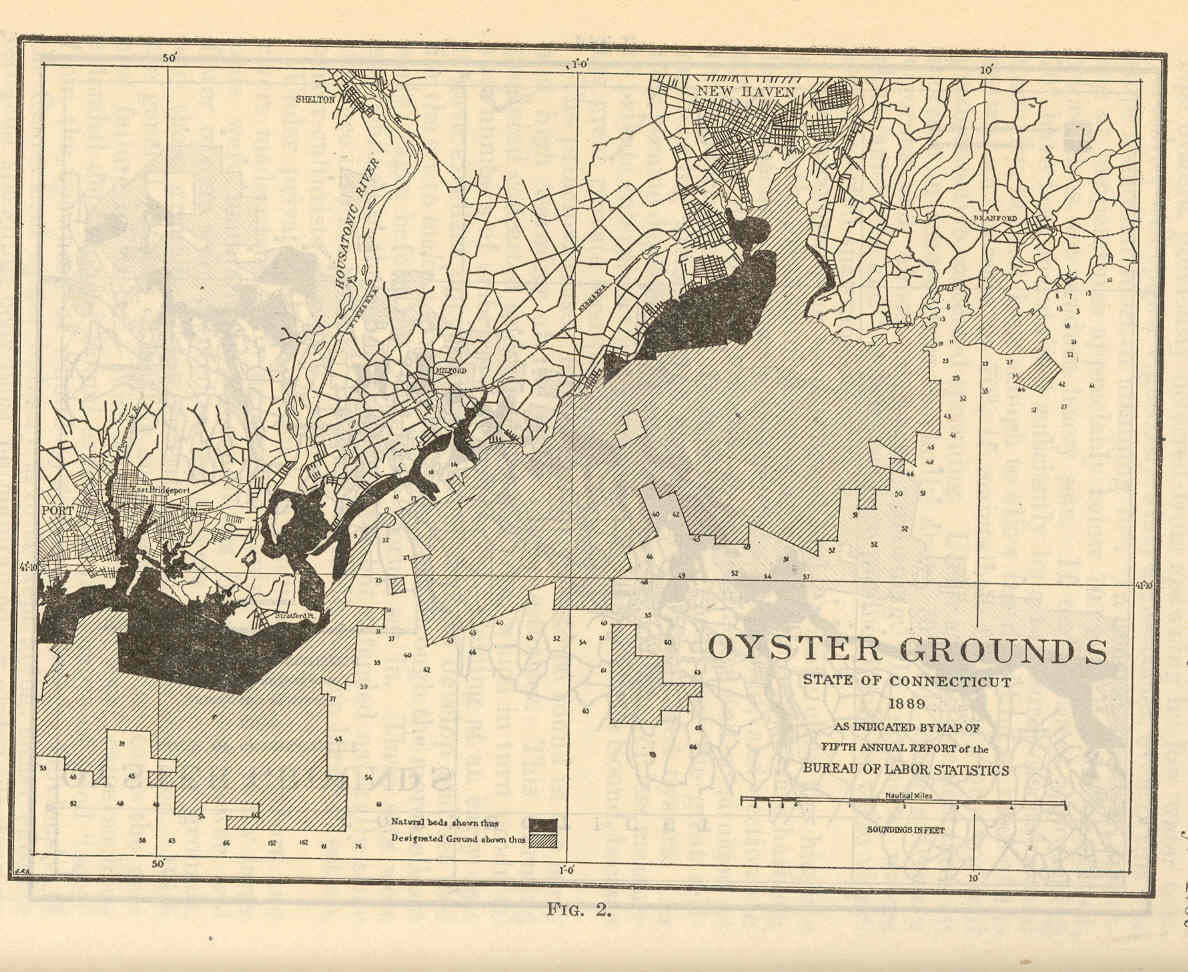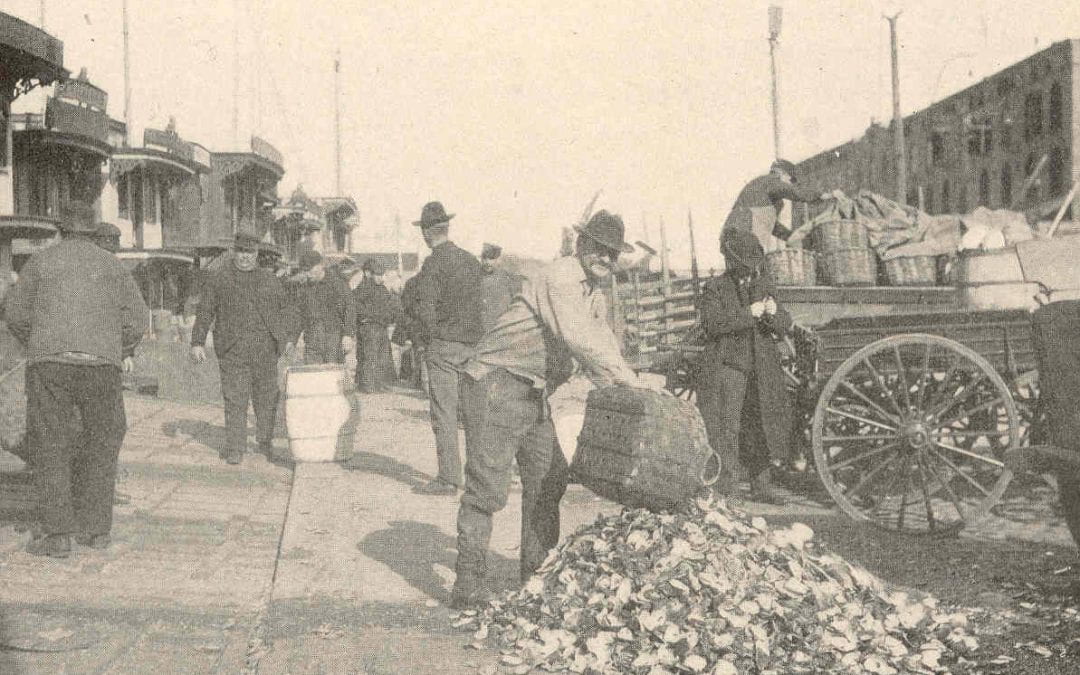Above: Along the Street Front. West Washington Market, New York City, 1903.
March 10, 2022
This week’s post was written by Danielle Schwartz.
This week we prepared to bridge the gap between pre-production and production. That means coordinating crews, equipment, interviews, and transportation. Because we’re filming in so many places, keeping everything organized is vital. We are all excited by how quickly our filming schedule is filling up.
The crew also worked on drafting interview questions that will best help us to tell the story. Afterward, Professor Lou walked us through how to create a workflow for uploading, logging, and organizing our media clips. With all this complete, we are set up for successful production and post-production moving forward.
Our first location shoots are going to be in Connecticut and New York City. At different times in history, both places were once considered the oyster capital of the world. Nowadays, the general consensus is that you don’t really think of CT or NYC as special places to source an oyster. And yet, in both places, the oyster industry is growing.
What happened to the oysters in Connecticut and New York City is a great example of a series of unfortunate events. Industrialization led to population increase which led to overharvesting, pollution, and damage to the oyster reefs. Add to that the destruction of natural habitat and food sources, all leading to increased predation of the oysters and less food for the oysters to eat. And then, in Connecticut, a series of hurricanes further destroyed the oyster reefs. There we find a story about a species that has been on the brink of collapse so many times but has bounced back, all the while still making the environment around it a better place (see this post on how oysters help our environment).
Connecticut:
The thing about any population within an ecosystem is eventually if there are more individuals being removed than can be naturally replaced, that population will whittle away. In Connecticut, this occurred from the mid-1700s all the way through the 1950s. Overharvesting was an issue so early on, that some parts of Connecticut created laws protecting the oysters as early as 1750. However, they were still overfished in other parts of Connecticut, and to recover the populations in those areas, shellfish had to be imported from out of state.
Time and time again, the oysters were threatened, and then they recovered thanks to the people who took action to regulate the oyster industry. Pollution, disease, and increases in natural predators all threatened the oysters, but the industry was still able to grow until it reached its peak in 1911.
Between 1920 and 1950, major hurricanes, human pressures, and the Great Depression seemed to put an end to the oyster industry in the state. It seemed like a slow recovery was possible. But then in the 1990s, a parasite wiped out almost 90% of the state’s oyster population.
This sounds devastating, but every story has a point where all hope seems to be lost before the hero (in this case, the oysters and the people who cultivate them) saves the day. Aquaculturists from Connecticut were able to breed an oyster that is resistant to the parasite. Nowadays, we are seeing an increase in the popularity of aquaculture in the state that suggests a potential comeback for the oyster capital in the coming decades.
New York:
New York City faced many similar problems to Connecticut. Early regulation during colonial times was ineffective at curbing overharvesting and the use of oyster shells for construction and agriculture caused an even more rapid decline.
As New York City became more populated and landfills grew, the pollution in the harbor became too great and in 1927 the oyster beds were officially closed due to toxicity. But as we have seen in Connecticut, there are still plenty of people out there who are helping the oysters recover. The Clean Water Act in 1972 set the stage for a cleaner New York Harbor and now projects such as the Billion Oyster Project are restoring the oyster reefs– one oyster bucket at a time.
New York City and Connecticut may not be the oyster capitals of the world anymore, but they are not letting go of the oysters any time soon. This week, we are going to take our first dive into the oyster’s journey and find out just what makes oysters and those who care about them so resilient.
Next week we will be writing to you from Cape Cod, where the story is quite different. Cape Cod oysters are a mainstay on restaurant menus throughout the country and have been popular since the mid-1800s. Though overfishing and pollution were also issues, the populations of oysters throughout the Cape were able to remain relatively stable compared to New York City and Connecticut. We will be examining how the oyster industry was able to remain stable and successful throughout the years, and how a long history of oyster farming shaped the culture of the Cape. See you there!

Oyster Grounds, State of Connecticut, 1889

